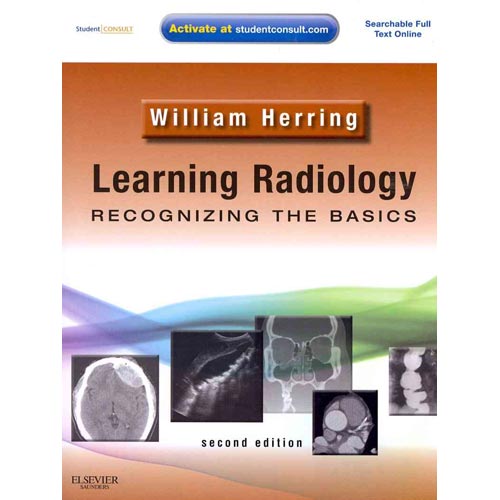The task of the medical image reader is, ultimately, to recognize images, that is to compare the image on a screen to one that is already etched into theradiologist’s consciousness. As the author notes:
“‘Burned’ into the neurons of a radiologists brain are mental images of what a normal frontal chest radiograph looks like, what thoracic sarcoidosis looks like, and so on.” (p. 6)
Learning Radiology employs a pattern recognition approach whereby the learner is taught to recognize pertinent features of radiographic images. The images shown are extremely characteristic and highlight the pertinent findings. This way, in the words of the author, the images are “burned” into the learner’s psych. For example, the book provides excellent radiographic images of pneumothoraces and, with the aid of arrows and lucid text, teaches the reader how to distinguish pneumothoraces from bullous disease. This is an extremely important distinction because, as the author points out, treatment for one (chest tube) can be extremely detrimental for the other (p. 61).

For the most part, the book is very well balanced with appropriately strong emphasis on plain radiography and other basic and ubiquitous imaging modalities. There is less emphasis on nuclear and interventional radiology, as these modalities are generally employed by more advanced practitioners.
Ultrasonography, I believe, deserves more elaborate representation in future editions. Learning Radiology appropriately emphasizes the role of ultrasonography in areas in which its use is very well established, namely biliary disease, obstetric and vascular issues. However, ultrasonography is now employed in many other settings such as pleural effusions, endotracheal tube placement, and, of course, pericardial effusions and tamponade. I believe that these topics should be covered in more depth. (Space for this additional material can be garnered by eliminating some of the redundancies contained in the text and image captions.)
In addition, while the book maintains a high degree of precision and erudition, there is an important error in the ultrasonography chapter (p. 193) that deserves attention and correction. The chapter opens with: “Ultrasound occupies an acoustical frequency on the electromagnetic spectrum that is hundreds of times greater than humans can hear.” (emphasis supplied). This is incorrect. Ultrasonographic waves are in fact electromagnetically neutral and are not on the electromagnetic spectrum at all. They form, as the author himself points out (id.), acoustical energy, which is what makes ultrasonography, unlike MRI which does use electromagnetic energy, safe, and often the study of choice, in patients with ferromagnetic implants.
Despite these rather minor drawbacks, Learning Radiology (2011) by William Herring MD is an outstanding medical book. I recommend it very, very highly to all clinicians, clinicians in training, and first year radiologists, and I congratulate the author for earning a very well deserved spot in my radiology curriculum for self-guided learners and on my list of best medical books of all time.


Leave a Reply